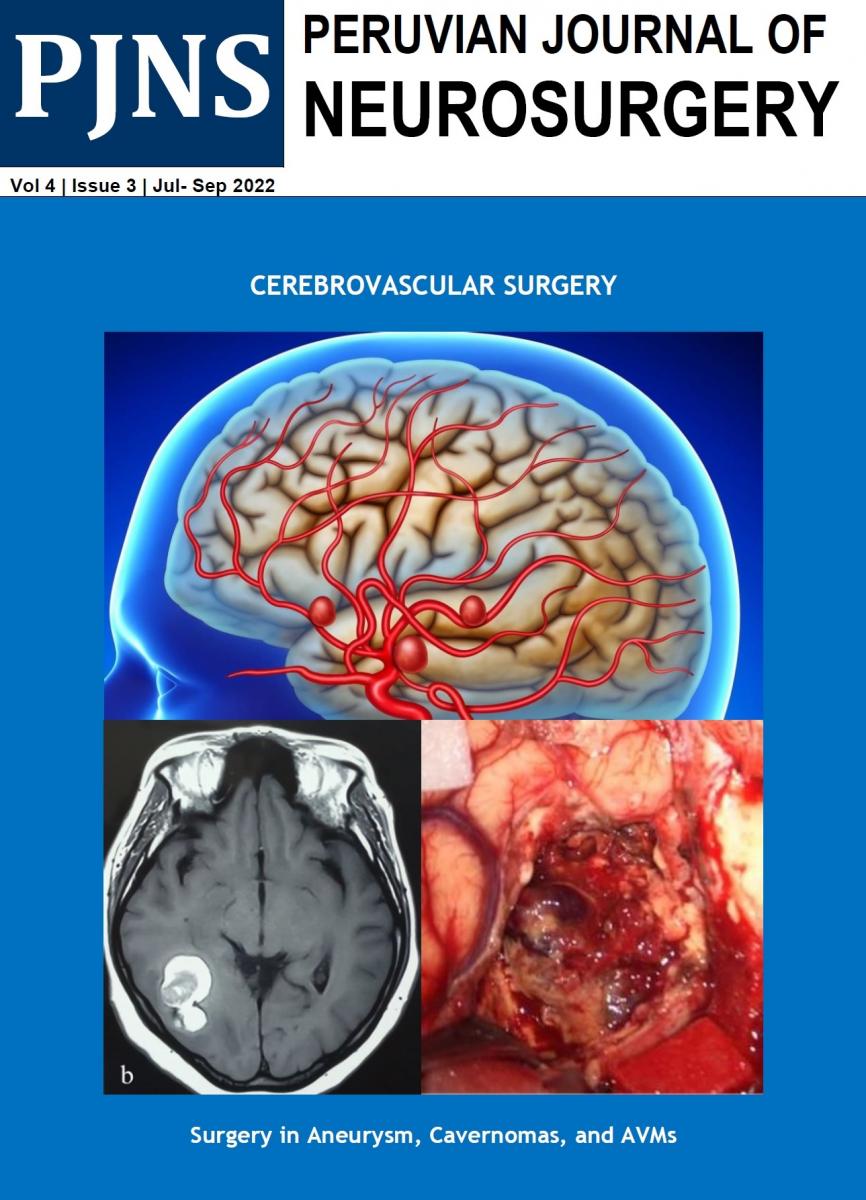Objective: Intra-operative cytological diagnosis of the CNS lesions helps the neurosurgeon to decide about the extent of resection particularly in eloquent areas. The squash or crush preparation of the available tiny tumor tissue at the start of the resection is a time saving and lead to better decision on further plan of surgery.
Material and methods - We have prospectively studied the accuracy of this technique at our institute. During the period of last two years we have operated 118 CNS mass lesions including cranial and spinal. All cases were subjected to squash diagnosis and later compared with paraffin sections.
Results - Out of total 118, cranial lesions were 105 and spinal were 13. Males outnumbered in frequency (77 cases, 65.2%) while the females comprised 41 cases (34.7%). Most (59.2%) of the patients were from 20 to 50 years of age. The cerebral hemisphere including all lobes had the largest number of cases (49 cases, 41.5%). Among them glial tumors form the major group (34 cases, 28.8%). Meningiomas were the next main group (18 cases, 15.3%) followed by Schwanommas and metastatic tumors having nine cases (7.7%) each. The cytological or squash diagnosis was possible in all except 11 cases (9.3%), in which a definite diagnosis could not be provided due to fibrous tissue, necrosis, and hemorrhage or poor preservation of cytological features.
Conclusion - Thus, our early experience concluded that Intra-operative SQUASH smear cytology is a fairly rapid and reliable method of intra operative diagnosis for a wide spectrum of central nervous system lesions.
Objetivo: El diagnóstico citológico intraoperatorio de las lesiones del SNC ayuda al neurocirujano a decidir sobre el grado de resección particularmente en áreas elocuentes. El frotis (squash) del pequeño tejido tumoral disponible al inicio de la resección ahorra tiempo y conduce a una mejor desición en el planeamiento quirúrgico de la cirugía.
Material y método: Nosotros estudiamos prospectivamente la exactitud de ésta técnica en nuestro instituto. Durante los últimos 2 años hemos operado 118 lesiones de masa del SNC incluyendo lesiones craneales y espinales. Todos los casos fueron sometidos a diagnóstico por frotis y posteriormente comparados con diagnóstico por parafina.
Resultados: De un total de 118 casos, 105 fueron craneales y 13 espinales. La mayoría fueron varones (77 casos, 65.2%) mientras que las mujeres fueron 41 casos (34.7%). L grupo etáreo más predominante (59.2%) fue el de 20 a 50 años. Los hemisferios cerebrales fueron los más afectados (49 casos, 41.5%). Los tumores gliales fueron los mas frecuentes (34 casos, 28.8%), seguido por los meningiomas (18 casos, 15.3%) y schwanommas y tumores metastásicos (9 casos,7.7% cada uno). El diagnóstico citológico o frotis fue posible en todos excepto en 11 casos (9.3%), en los cuales el diagnóstico definitivo no fue posible debido a fibrosis tisular, necrosis, hemorragia o pobre preservación de características citológicas.
Conclusion: Con ésta experiencia inicial se concluyó que el frotis tisular (SQUASH) es un método bastante rápido y confiable de diagnóstico intraoperatorio para un amplio espeectro de lesiones del SNC.


